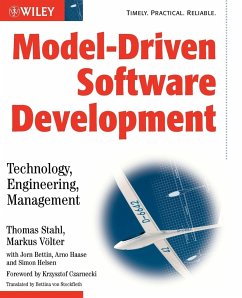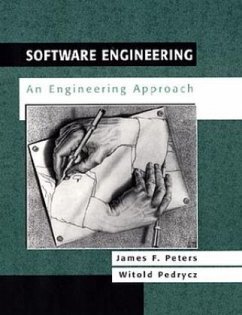
Software Design
From Programming to Architecture
Versandkostenfrei!
Nicht lieferbar
All Computer Scientists and Software Engineers need to understand software design, but until now there hasn't been one, complete, up-to-date guide to its theory and practice.
Eric Braude's Software Design: From Programming to Architecture begins at the code level with programming issues such as robustness and flexibility in implementation. Increasing in abstraction and scope, the book then moves to mid-level issues, emphasizing a thorough understanding of standard design patterns and components. Finally, the book ends with high-level issues such as architectures, frameworks, and object-oriented analysis and design. In addition, the text contains a prologue on software process, making it versatile enough to use in a software engineering course.
Eric Braude's Software Design: From Programming to Architecture begins at the code level with programming issues such as robustness and flexibility in implementation. Increasing in abstraction and scope, the book then moves to mid-level issues, emphasizing a thorough understanding of standard design patterns and components. Finally, the book ends with high-level issues such as architectures, frameworks, and object-oriented analysis and design. In addition, the text contains a prologue on software process, making it versatile enough to use in a software engineering course.
UML (the Unified Modeling Language), design patterns, and software component technologies are three new advances that help software engineers create more efficient and effective software designs. Now Eric Braude pulls these three advances together into one unified presentation:
A helpful project threaded throughout the book enables readers to apply what they are learning
Presents a modern and applied approach to software design
Numerous design patterns with detailed explanations provide essential tools for technical and professional growth
Includes extensive discussion of UML with many UML examples
A helpful project threaded throughout the book enables readers to apply what they are learning
Presents a modern and applied approach to software design
Numerous design patterns with detailed explanations provide essential tools for technical and professional growth
Includes extensive discussion of UML with many UML examples










